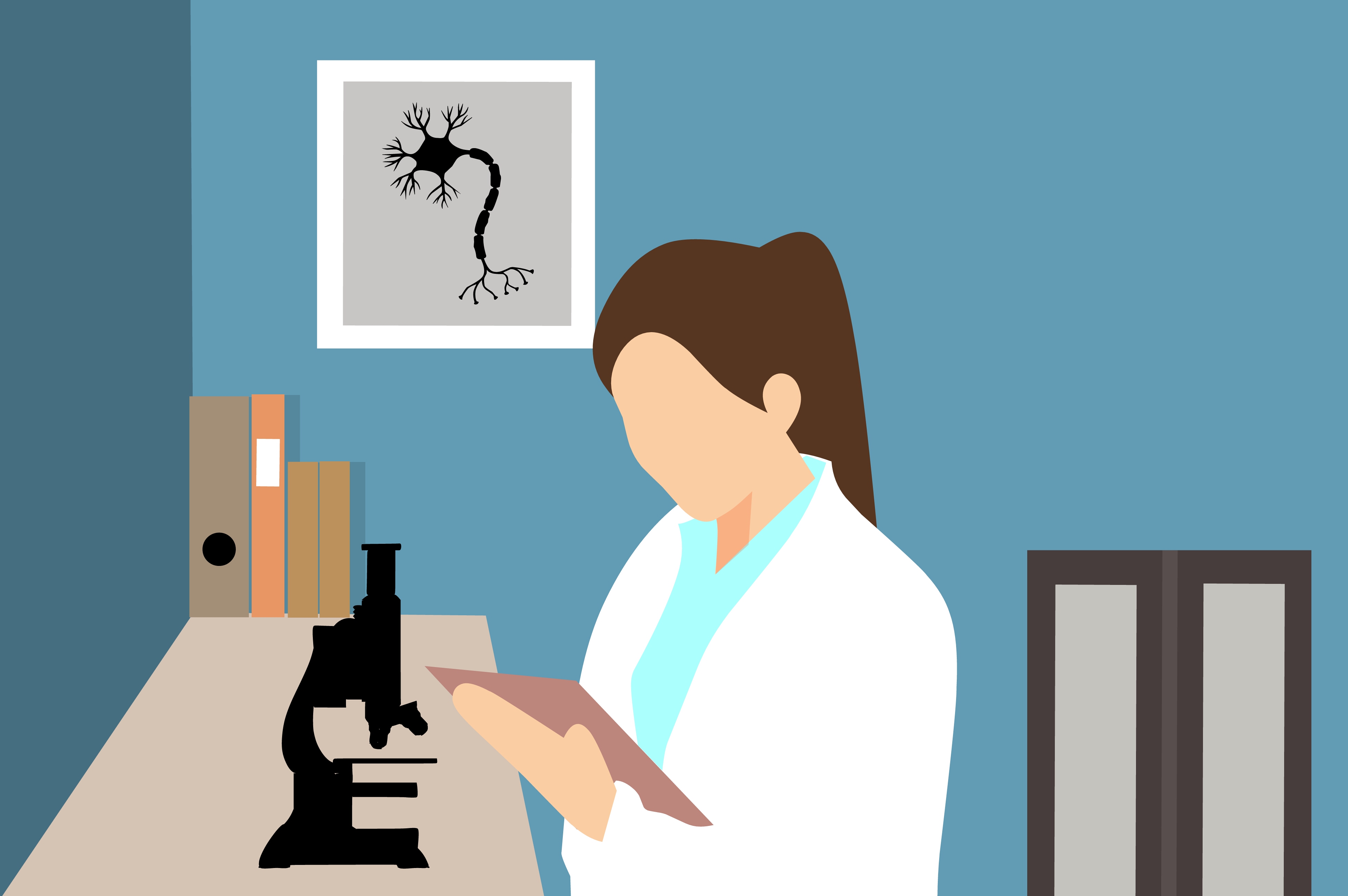Emma Garst
*Identifying details have been changed to protect privacy.
When I met her, Laura* was the sort of postdoc who exuded professorial confidence. She was charismatic, a good writer and speaker, and an excellent experimentalist. Our professor sang her praises. Why shouldn’t he? She was talented and motivated.
Some lab members started joking that our professor was “clearly in love with her.” The joke spread; it was an easy way to release tension in a very competitive work environment. I thought Laura was laughing along with everyone else, but when this ribbing continued for a couple of months, Laura turned to me in frustration and asked, “Can’t I just be good at my job?”
In 2018, the National Academies of Science, Engineering, and Medicine (NASEM) released a study on sexual harassment in the academic sciences entitled “Sexual Harassment of Women: Climate, Culture, and Consequences in Academic Sciences, Engineering, and Medicine.” The report reveals the shocking extent of gender-based harassment in the academic workplace.
Between 20-50% of female students in science, engineering, and medicine report experiencing sexual harassment. This number jumps to over fifty percent for women at the faculty level. The report further breaks down high-risk populations—women of color and LGBTQ+ individuals are more likely to experience harassment than white, heterosexual women.
In total this means that, excluding the military, women in academia are harassed at higher levels than in any other sector of society.
Harassment is not just unwanted sexual attention or sexual assault; it can be a culture of belittling comments or raunchy jokes. The most prevalent but most misunderstood form of sexual harassment is gender harassment. Gender harassment is described as “verbal and nonverbal behaviors that convey hostility, objectification, exclusion, or second-class status about members of one gender.” When I spoke with Kate Clancy, an associate professor of anthropology at the University of Illinois and co-author of the 2018 NASEM report, she had a more snappy way of putting it: “we call [gender harassment] the put-downs of sexual harassment, whereas unwanted sexual advances and sexual coercion are the come-ons.”
These put-downs are all around us—they’re insidious and difficult to articulate because they are so thoroughly normalized in our culture. The women who experience gender harassment and choose to speak up about it are labeled as “sensitive” and over-reactive. But gender harassment is sexual harassment. It is, in fact, the primary form of sexual harassment.
The NASEM report found that women are leaving science due to sexual harassment, and that jokes can be just as harmful to a woman’s career as more violent forms of harassment. The negative effects of gender harassment extend beyond the subject to witnesses, labs, and entire institutions. As the National Academies’ report states, “the net result of sexual harassment is therefore a loss of talent, which can be costly to organizations and to science.”
But why is gender harassment so damaging? “For most people [an unwanted sexual advance] is a rare event. I think for a lot of folks it’s easier to externalize it and say, wow, this guy is just…trying to date me or trying to make me feel bad,” says Clancy. “Whereas put downs are really easy to internalize because one, we don’t recognize them as harassment and two, they often end up making you feel like the problem is you.”
Gender harassment can be even more difficult to spot as a bystander. This was the case with Laura’s harassment—I absolutely laughed along with the group. Despite going to a women’s college, despite considering myself a “Good Feminist,” I didn’t even see what I was contributing to until Laura told me. I hadn’t considered the implications of the “joke” —that she hadn’t earned her praise, that she had been singled out as a favorite not because of her skill but because our principal investigator might be attracted to her.
In a way, Laura’s harassment was textbook—the harassment was coming from her peers (80% of gender harassment does). It was not a one-off joke, but instead lasted for a period of months (which, again, is common). And she didn’t feel there was a way to address the harassment, either through direct confrontation or an institutional route.
So what is it about academia that makes it so toxic for women and damaging to their careers?
One major factor is a culture of male dominance. This is easiest to understand in fields such as engineering and physics, where men vastly outnumber women. However in the biomedical sciences, where women have been earning more Ph.D.s than men for many years, the concept is more nuanced. Male domination in these fields refers to the fact that men generally hold higher positions than women, and that the field has historically been male.
Academia is also hierarchical. Institutions with a strong hierarchical power structure are more likely to foster sexual harassment. This is especially true when power is concentrated in a few individuals (for example, “superstar” professors), and those who report feel that revealing harassment will have lasting effects on their careers. The nature of our system causes students to rely heavily on the full-throated endorsement of their mentors—which leaves them little to no recourse if they wish to report inappropriate behavior.
The truth is academic science is highly competitive. People can be cruel to each other in all sorts of ways, due to professional jealousy, ambition, or just general stress. Everyone has an anecdote about being humiliated at lab meeting, or getting back an eviscerating review on a paper. Everyone has experienced some incivilities (officially defined as, “low-intensity deviant behavior with ambiguous intent to harm the target”).
Part of this is the broader culture of academia. “We tend to equate treating people like crap with being rigorous researchers,” Clancy points out. However, these incivilities are not evenly distributed; “There’s ample research that now shows, even though incivilities don’t seem to be gendered, they are actually quite gendered and racialized.…The folks that experience them most are typically women of color followed by white women, then men of color and white men,” Clancy says. Given that women and people of color also have their gender or race routinely used against them, it’s no wonder academia has a climate problem.
In the end, organizational climate is by far the best predictor of sexual harassment. Harassment flourishes where people who report it are perceived to take on risk, where there are no sanctions against perpetrators, and where reporters’ experiences are not taken seriously by their peers or institutions.
Sure, individuals harass. But that is a learned behavior that grows out of a culture of perceived ambivalence. Frequently an institution’s priority is “symbolic compliance,” which focuses on protecting the institution and avoiding liability, instead of ensuring the safety of its employees.
Any institution serious about the success of the women it hires must take decisive action to stamp out the toxic culture that dominates the scientific workplace. Without a concerted effort to reform the workplace, gender equality will always be a fantasy for the academic sciences.
It’s the accumulation of harassment over many years that causes lasting damage to women in science. I truly think that every one of Laura’s experimental successes was, at some point or another, reduced to “because he’s in love with you.” In a job that contains so much day-to-day failure, how horrible is it to take away the successes as well?
When Laura and I talked recently, she brought up one of the earliest, most formative experiences of her scientific career. She was a technician, straight out of college, and had gone to her professor to propose some experiments.
“Woah, watch out,” he said. “Girl scientist on the loose.”
Of course this affected the way she presents herself. Of course this caused her to think about how she is perceived by the scientific community. It was a joke. And it stuck with her.
In the end I moved on from the lab where I met Laura. She moved on too— out of science entirely.
I am a graduate student now. Recently, I received a small bit of positive feedback from someone I consider to be a mentor. Elated, I flounced into lab and showed the first person I ran into.
My labmate read it, and laughed, “he should have just asked for your number.”



